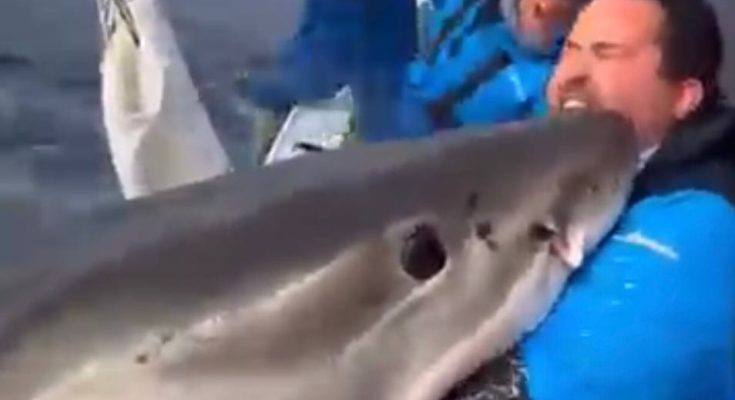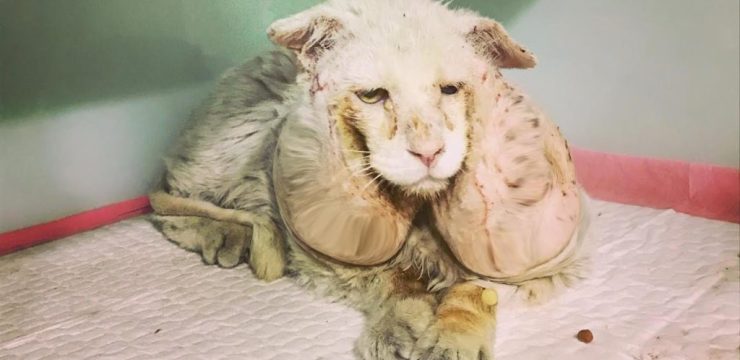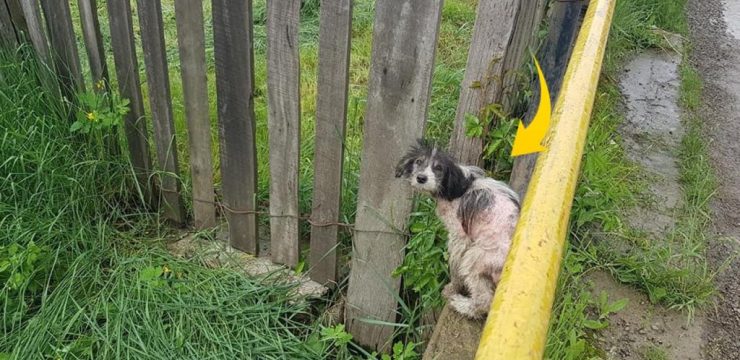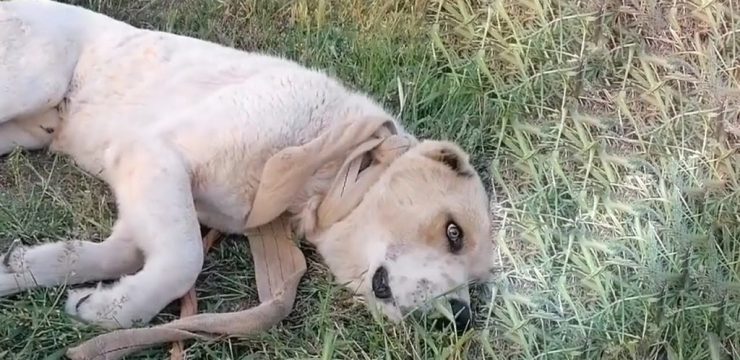The morning began like any other along the South African shoreline. The sea glistened under the rising sun, the waves rolled in gentle rhythm, and the crew aboard a small research vessel exchanged easy laughter as they prepared for another day at work. No one could have imagined that, within hours, this ordinary day would become one of the most unforgettable experiences of their lives. What started as a routine marine expedition would soon turn into a powerful story of courage, compassion, and the fragile connection between humans and the ocean’s most feared predator—the great white shark.

Far from the calm of the harbor, a call for help came through the radio. A local fisherman had spotted something unusual near a cluster of abandoned fishing nets drifting in open water. Entangled within the mess of ropes and debris was a massive great white shark, thrashing helplessly against the suffocating trap. Each attempt to break free only made the situation worse, tightening the net’s cruel grip and cutting deeper into the animal’s thick skin. The fisherman’s voice trembled as he relayed what he had seen. The shark was still alive—but barely.
Dr. Emily Carter, a renowned marine biologist specializing in shark behavior, immediately recognized the urgency. She and her crew had spent years studying the species, driven by both scientific curiosity and a deep respect for the ocean’s balance. But this was no ordinary mission. This was a rescue. As their vessel surged toward the coordinates, tension built on deck. Every crew member knew the risks: great white sharks, even in distress, were unpredictable. Yet Dr. Carter’s voice cut through the anxious air with calm authority. “We’re here to help, not to harm,” she reminded them.
The sea shimmered like glass when they arrived, but beneath that deceptive calm lay a struggle between life and death. Then, through the water’s surface, a dark fin appeared—majestic yet wounded. The shark’s body was wrapped tightly in layers of plastic and nylon, scars already forming where the net had bitten into its flesh. For a moment, the crew fell silent, struck by both the creature’s power and its suffering.
Without hesitation, Dr. Carter ordered the smaller dinghy to be lowered. She and two team members climbed aboard with cutters, poles, and gloves designed for underwater work. The plan was simple: move slowly, avoid sudden motion, and start cutting the nets piece by piece. But nothing about it felt simple in the moment. As they drew closer, the shark’s massive eye followed their movement—a mix of fear, confusion, and perhaps a faint recognition that these humans meant no harm.
The first cut was made. The sound of the blade slicing through wet nylon was nearly drowned out by the crashing waves. Bit by bit, they worked their way around the shark’s body, each movement deliberate and careful. The animal’s gills flared, muscles twitching with every contact. It could have lashed out, but somehow, it didn’t. Whether from exhaustion or instinct, the shark remained still enough for the rescuers to continue.
Minutes passed like hours. The team’s arms ached, their hearts pounded. One wrong move could have sent the entire dinghy into chaos. And then it happened—the shark jerked violently, sending a surge of water over the side of the boat. The team held tight as tools clattered to the deck. For a split second, panic flashed across every face. But Dr. Carter stayed firm. “Hold your ground!” she shouted. “We’re almost there!”
When the final strand was cut, the net floated free. The great white, sensing liberation, gave one last powerful thrash. The ocean erupted with foam and spray, and then—sudden stillness. The shark hovered beside the boat, motionless except for the slow rhythm of its gills. The rescuers could hardly breathe. Then, with one graceful movement, it began to swim. Slowly at first, circling the dinghy as if assessing its saviors. The moment stretched, charged with awe and disbelief. And then, with a final flick of its tail, the great white vanished into the depths, leaving only ripples behind.
The boat erupted in cheers. Laughter and tears blended in a rush of relief. For Dr. Carter, it was a moment of profound realization. She looked out across the vast expanse of blue and felt a deep, humbling connection. In that instant, predator and protector were not enemies—they were two parts of the same world, bound by the fragile thread of coexistence.
Back on the research vessel, the team documented every detail of the rescue. They took photos of the freed nets, recorded the GPS coordinates, and made notes on the shark’s condition. Their mission, though risky, had succeeded beyond expectation. Word of the rescue soon spread, reaching conservation groups and environmental networks worldwide. Within days, the story went viral on social media, praised as an example of how empathy and science could work together to protect even the most misunderstood creatures of the sea.
Dr. Carter’s email inbox overflowed with messages of gratitude—from students inspired to study marine biology to ordinary people who confessed that, for the first time, they saw sharks not as monsters, but as vital parts of the ecosystem. The story reignited conversations about the dangers of “ghost nets,” the abandoned fishing gear that silently kills thousands of marine animals every year. Governments and NGOs began discussing stricter cleanup programs, and new funding was pledged to help prevent similar tragedies.
Yet for Dr. Carter, the true reward was quieter. One evening, long after the rescue, she returned alone to the deck, watching the sun sink into the horizon. The sea was calm again, its surface glowing gold and crimson. Somewhere beneath those waters swam the same great white—healed, alive, and free. She smiled, knowing that for all humanity’s fears, understanding and compassion could still prevail.
What began as a terrifying encounter became a story of mutual respect—a moment that bridged the divide between fear and empathy. The rescue of the great white shark was more than a scientific victory; it was a symbol of what humanity can achieve when courage meets compassion. The ocean, vast and unpredictable, mirrors our own nature: capable of both destruction and grace. And on that unforgettable day off the South African coast, those two forces met—not as adversaries, but as allies, proving that even the fiercest predator deserves a chance to survive, and that true strength often lies in the kindness we choose to show.





